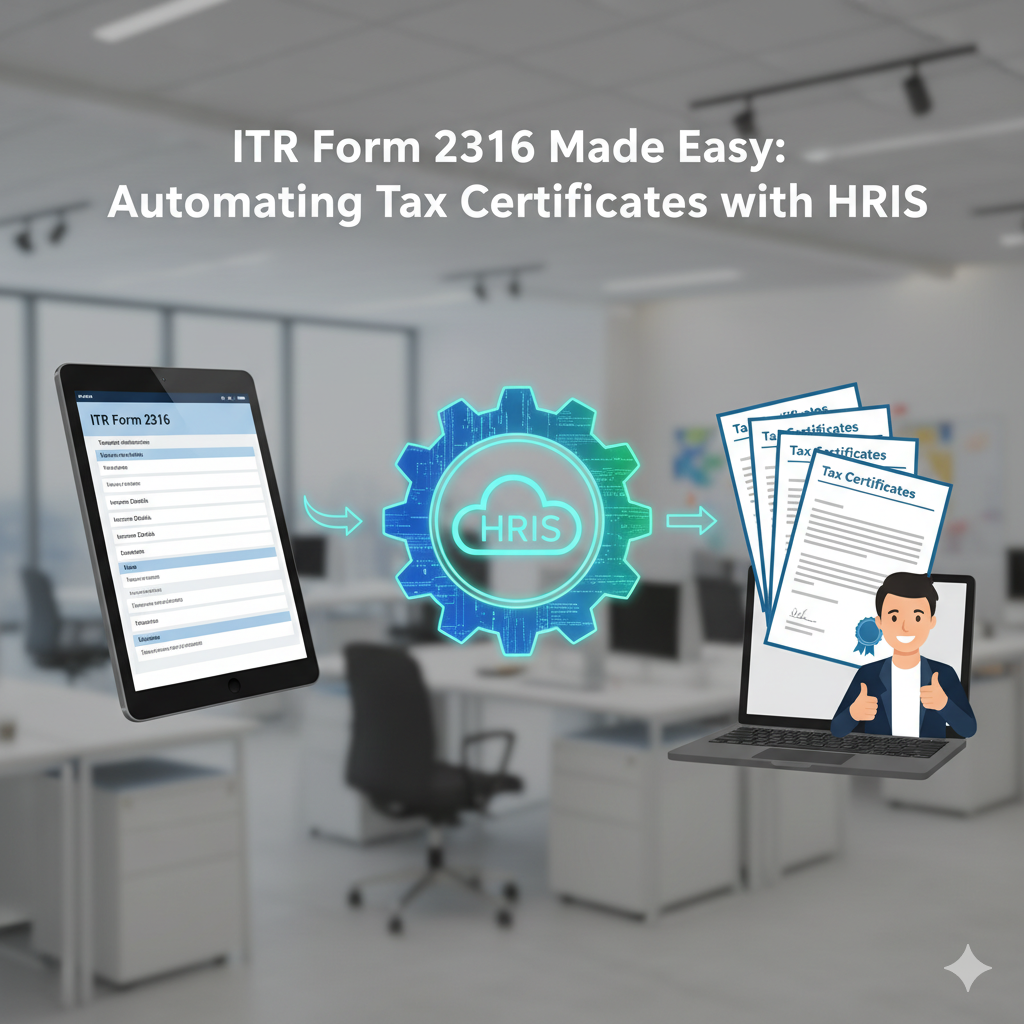Every year, employers in the Philippines are required to prepare and issue BIR Form 2316, also known as the Certificate of Compensation Payment/Tax Withheld, to their employees. This form is crucial for both compliance with the Bureau of Internal Revenue (BIR) and for employees’ annual income tax returns (ITR).
Traditionally, generating ITR Form 2316 has been a manual, time-consuming, and error-prone process. However, with the use of modern Human Resource Information Systems (HRIS), businesses can now automate the creation and distribution of Form 2316, ensuring accuracy, efficiency, and compliance.
In this article, we’ll explore how HRIS automation simplifies ITR Form 2316 generation and why businesses should adopt this solution.
What is ITR Form 2316?
ITR Form 2316 is a tax certificate issued by employers to employees that summarizes:
- Total compensation income for the year
- Taxable and non-taxable benefits
- Taxes withheld and remitted to the BIR
Employees use this form for filing their annual income tax returns or for employment transitions during the year. For employers, proper preparation and submission of Form 2316 is not just a responsibility—it’s a legal requirement.
Challenges in Manual ITR Form 2316 Preparation
Without automation, HR and payroll teams often face:
- Data entry errors – Incorrect TINs, names, or compensation details.
- Time-consuming processes – Consolidating payroll records for each employee.
- Late submissions – Risking penalties from the BIR.
- Difficulty in bulk generation – Managing hundreds of employees at once.
These challenges highlight the need for a system-driven approach.
How HRIS Automates ITR Form 2316 Generation
Centralized Employee Records
HRIS platforms store employee profiles, TIN numbers, compensation history, and benefits in one system, eliminating the need to cross-check multiple files.
Automatic Payroll-to-Form Integration
Since payroll is managed within the HRIS, compensation and tax data are automatically transferred to Form 2316 fields, reducing manual encoding.
Bulk Generation and Distribution
With just a few clicks, HR teams can generate hundreds of ITR Form 2316 certificates at once. Some systems even allow automatic emailing of the forms to employees.
BIR DAT File Compatibility
Advanced HRIS systems can generate both the printable Form 2316 and the BIR DAT file format, which is required for electronic submission.
Error Reduction and Compliance
Automated validation tools ensure that entries like TIN, employer details, and compensation breakdowns are accurate before submission.
Benefits of Automating ITR Form 2316 with HRIS
- Time Efficiency – What used to take days or weeks can now be completed in hours.
- Accuracy – Minimized risk of human error in tax certificates.
- Compliance – Automatically aligned with the latest BIR requirements.
- Employee Satisfaction – Employees receive their tax certificates faster and more reliably.
- Cost Savings – Reduced administrative overhead and printing expenses.
Best Practices for Employers Using HRIS for Form 2316
- Keep Employee Data Updated – Ensure TINs, compensation, and benefits are accurate year-round.
- Choose an HRIS with BIR Integration – Not all systems generate DAT files; pick one that does.
- Train Your HR & Payroll Team – Familiarize staff with the system for smooth year-end filings.
- Set Internal Deadlines – Don’t wait until the last day; use the HRIS to generate and review forms early.
- Maintain Secure Records – Store both electronic and physical copies for audit readiness.
Conclusion
Automating ITR Form 2316 generation with an HRIS is no longer just a convenience—it’s a strategic move for businesses aiming to improve compliance, efficiency, and employee trust. By leveraging HRIS solutions, employers can simplify tax certificate management, reduce errors, and focus on higher-value HR tasks.
With tax season always around the corner, now is the best time to invest in a system that takes the stress out of BIR reporting.

